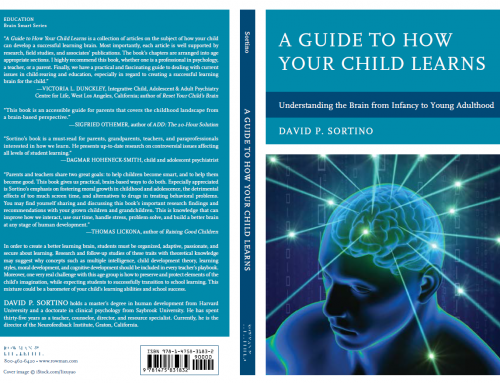Learning how to remember: What students learn is not always what they will remember!
All students at some time in their school lives will need to learn strategies about how to remember some lesson or homework activity regardless of their interest level. For some students this is a great challenge, not because they lack intelligence, but because their brains often reject trying to remember disinteresting information. In fact, many students are literally thrown to the wolves without using proven strategies to soften the difficulties associated with having to remember new or disinteresting information. Strategies are critical because they eliminate the student from blocking — they cannot recall information even after hours of studying. Moreover, strategies to help students remember would certainly help parents from pulling their hair out every time the student is required to study for a spelling test, or learn the 50 states and capitals. As much as we rail against such assignments, such lessons will always be a part of school and in some ways, however good or bad, only expose the student’s inability to learn. Finally, we should thank teachers for assigning such exercises because learning math facts or states and capitals are essential foundations for future learning experiences.
With this in mind, let’s look at what researchers theorize about what and how students remember. For example, most students only remember about ten percent of what they read, and this is lowered if they are disinterested or begin to move around shortly thereafter. Next is what they hear, or about twenty percent, also lowered if their listening lacks any emotional connection to the subject for discussion? And thirty percent of what they see, such as looking at pictures or photos. Forty percent, as in watching a movie, but again, this could rise if the film is interesting. Fifty percent, such as looking at an exhibit that is appealing. Seventy to eighty percent, as in participating in a discussion about something they care about, such as giving a talk, doing a dramatic presentation, or simulating the real experience. Lastly, a high of ninety percent of what they prefer to say and do. Notice the words “prefer to say and do” which would obviously be supportive of personal interests. Again, these percentages should not be generalized to the entire school age population, and remember some students’ ability or strategies to remember are less developed than others. In short, notice how the percentages tend to parallel or connect with Howard Gardner’s theory of multiple intelligence. According to Gardner, “children learn best when we recognize their preferred intelligences.” For instance, children who demonstrate a high linguistic intelligence or good verbal skills could expect to remember ninety percent of what they read, or the child who exhibits strong visual or spatial intelligence could remember ninety percent of what he sees and so forth.
There are many concrete strategies to help your student remember such as chunking or grouping bits of information according to what they have in common; stimulating deep processing by relating the material to themselves. Organizing through meaning and association, such as pairing it with something they know very well. Encouraging active learning or attending to what they are learning; Tapping into visual memory, with diagrams, tables, outlines, and graphs. Talking it out, as in verbally reciting the information aloud, and finally visualizing or presenting as in teaching the material.
The wise parent needs not only to learn strategies that will help their student learn how to remember, but also to be aware of their child’s learning style and multiple intelligence. If you have any additional learning to remember strategies please e-mail me. I would love to hear them. *David Sortino, Ed.M, Ph.D. For further information contact davidsortino@comcast.net or 707-480-1649


